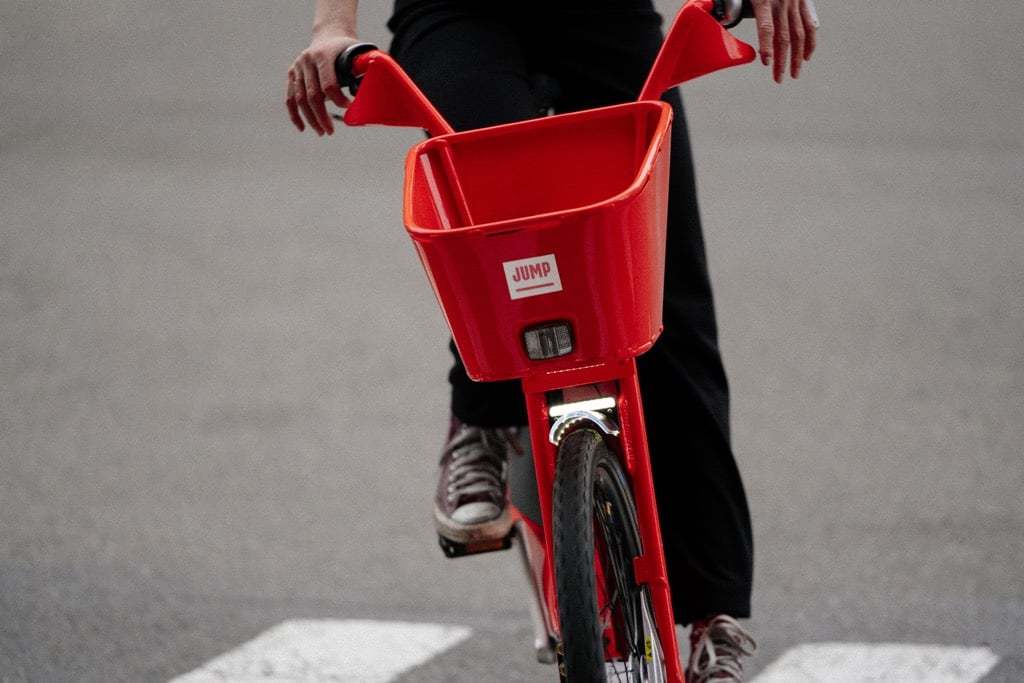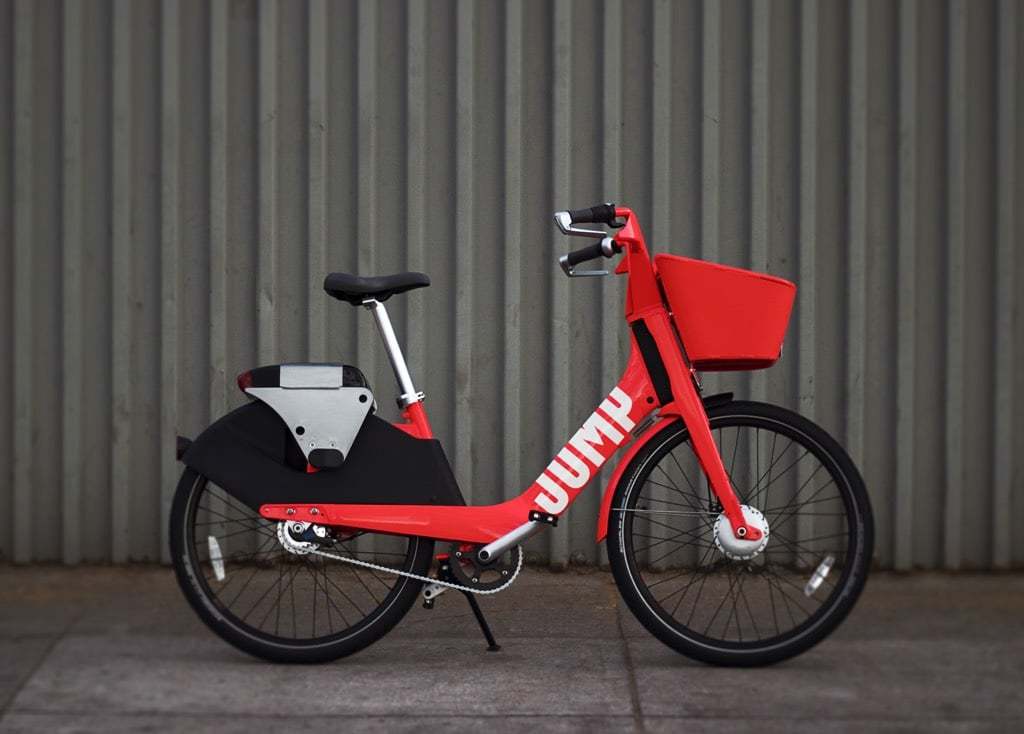Uber bought a bike-share company. The ride-hailing company announced on Monday that it will acquire Jump, the New York City-based e-bike startup that has been working with Uber for two months on a pilot to integrate bike-sharing options into Uber’s app. Apparently, that trial went well because now Jump will become a subsidiary of Uber, and the ride-hailing company will take a leap into a brand new industry, with a different set of challenges and pitfalls.

The size of the deal was not disclosed, Jump was weighing a $100 million offer from Uber or a new venture investment round. The competition was fierce, but Uber ultimately won. In a blog post, CEO Dara Khosrowshahi said the acquisition will help in his mission of “bringing together multiple modes of transportation within the Uber app—so that you can choose the fastest or most affordable way to get where you’re going, whether that’s in an Uber, on a bike, on the subway, or more.” (Side question: is Uber thinking of buying the MTA?)
The deal gives Uber access to Jump’s 12,000 dockless, GPS-enabled bikes in 40 cities across six countries — a vast network in the bike-share world that will certainly become even larger as Uber’s capital will help to scale it even further. It also helps fulfill one of the company’s missions to branch out into new modes of transportation.
Khosrowshahi called Jump’s CEO Ryan Rzepecki “an impressive entrepreneur who has spent the better part of a decade bringing bike-sharing to life across the globe.” For his part, Rzepecki said he was initially wary of Uber’s offer, given the numerous scandals that have roiled the company in the past year. He writes:
When we first began talking to Uber they were going through an extremely difficult time, with negative headlines each week and a massive change in leadership. We expected to find a toxic work environment and a broken culture. Instead, everyone we met was smart, passionate, and genuinely wanted to help our team succeed. Through our collaboration we realized that we shared Uber’s vision of multi-modal mobility and had the same goal of decreasing car ownership. Even more importantly, we could see the shift in the company once Dara was named CEO as he began leading with humility and in a way that we felt reflected our values. It soon became clear that with such strong synergies and alignment on mission, JUMP could better accomplish its goals if it were part of Uber.
Formerly known as Social Bicycles, Jump launched its bike-share business in 2010 with the aim to build smart, powerful bikes that could be locked to any rack. Jump’s bicycles have built-in U-bar locks that allow them to be secured to existing bike racks or the “furniture zone of the sidewalk,” which is where you see things like light poles, benches, and utility poles. Earlier this year the company received exclusive permission from the San Francisco Municipal Transportation Authority (SFMTA) to launch its service in Uber’s backyard. Since dockless bikes are pretty new in the US, SFMTA is using the next 18 months to assess the program to see if it works before allowing Jump to offer its services in the long term. Jump has 250 neon-red electric powered bikes scattered across the city today.

Weeks after Jump’s launch in San Francisco, Uber announced a pilot to integrate the bike-share startup into its app. Uber users who were interested in taking two wheels instead of four could tap the “bike” option in the app, located in the top left corner of the home screen. The app would show them available bikes nearby that can be reserved. After reaching their destinations, bikes need to be left on a public rack in the designated “bike zone” shown on the app’s map.
Dockless bike-sharing is certainly having a moment. Unlike fixed-dock bike-share services like Motivate’s Ford GoBike in San Francisco, Citi Bike in New York City, and Capital Bikeshare in Washington, DC, station-less services like Jump, Mobike, Ofo, Spin, and LimeBike can be picked up and dropped off anywhere there is space for bike parking. Some, like Jump, also offer pedal assistance powered by an electric motor, which is sure to help when you’re trying to tackle San Francisco’s notorious hills. That business model is now being used by electric-scooter services like Bird in Los Angeles and San Francisco. New York City is planning to launch a pilot this summer, with 12 companies (Jump included) in the running.
Naturally, all this activity has led some to question whether the market is already oversaturated. Transit enthusiasts are thrilled by the excitement around biking, but these dockless services are already becoming synonymous with clutter and obstructed sidewalks. Photo essays of sprawling lots of abandoned bikes in China, or bikes hanging from trees or sunk in creeks in Washington, DC or Dallas, are popular online clickbait.
The question is: will Uber’s acquisition bring more scrutiny to this nascent industry? Will an Uber-owned bike-share company lend some legitimacy to an exponentially growing business, or bring more skepticism? And most importantly: will your rating on Uber suffer if you ditch your bike in a bush?

Local officials across the country are bracing for a flood, as bike-sharing startups armed with tens of millions of dollars in venture capital cash plan to blanket most major cities in the coming months. Uber’s acquisition of Jump will no doubt send the current hype cycle into the stratosphere.
Uber’s interest in Jump is fairly obvious. The addition of a bike option in Uber’s app raises the possibility that other transportation options, like subways and buses, will also be integrated into the ride-hail service’s app down the line. Last February, Khosrowshahi told a Wall Street audience, “I want to run the bus systems for a city.”
With so many travel options these days, there is certainly a demand among consumers for more aggregation. Navigation apps like Transit, Citymapper, and Google Maps now list ride-hailing options alongside transit and bike routes. People want to compare prices and make informed decisions, and there is a race among companies to be the first to offer that multimodal service.
By Andrew J. Hawkins
Source: https://www.theverge.com/2018/4/9/17213994/uber-acquires-dockless-bike-share-jump

